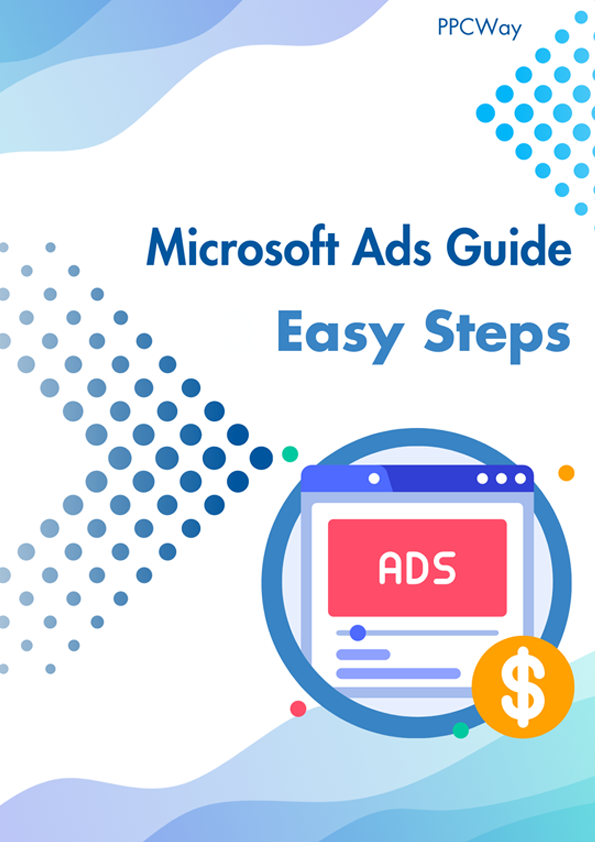Brief overview of Microsoft RSA campaigns or optimizing Microsoft ads
This is all about optimizing Microsoft ads.
Microsoft RSA campaigns, also known as Responsive Search Ads campaigns, are a powerful advertising tool offered by Microsoft Advertising.
These campaigns aim to enhance the effectiveness of search engine marketing by providing advertisers with more flexibility and control over their ads.
Unlike traditional search ads, RSA campaigns allow advertisers to create multiple headlines and descriptions.
Microsoft's algorithm then dynamically combines and tests different combinations of these elements to deliver the most relevant and engaging ad to each user.
This approach enables advertisers to reach a wider audience and improve the performance of their campaigns.
RSA campaigns offer several benefits, such as increased ad space, improved ad relevance, and higher click-through rates.
By leveraging machine learning and automation, Microsoft RSA campaigns streamline the ad creation process and optimize performance based on user behavior and preferences.
With RSA campaigns, advertisers can continuously analyze and optimize their campaigns to achieve better results.
By monitoring key metrics and making data-driven adjustments, advertisers can refine their targeting, improve their ad copy, and maximize their return on investment.

Importance of analyzing and optimizing campaigns
Analyzing and optimizing campaigns is of paramount importance for advertisers looking to maximize their advertising efforts and achieve optimal results.
Here's why:
1. Cost Efficiency: Analyzing campaign data allows advertisers to identify areas of inefficiency and optimize their budget allocation.
By evaluating key metrics such as click-through rate, conversion rate, and cost per acquisition, advertisers can identify underperforming elements and make data-driven adjustments to improve campaign efficiency.
This helps to ensure that the budget is utilized effectively, minimizing wasteful spending and maximizing ROI.
2. Performance Enhancement: Regular analysis of campaign data provides valuable insights into what is working and what needs improvement.
By tracking metrics such as keyword performance, ad copy effectiveness, and audience targeting, advertisers can identify high-performing strategies and replicate their success while eliminating or modifying underperforming elements.
Optimization strategies can be implemented to refine targeting, improve ad copy, and increase engagement, leading to higher conversion rates and improved campaign performance.
3. Audience Understanding: Analyzing campaign data helps advertisers gain a deeper understanding of their target audience.
By studying demographic data, behavior patterns, and preferences, advertisers can refine their targeting parameters and tailor their messaging to resonate with their audience.
This allows for more precise and effective audience segmentation, leading to increased engagement and higher conversion rates.
4. Continuous Improvement: Optimization is an ongoing process that requires continuous monitoring and adjustment.
Analyzing campaign data provides valuable feedback and insights that allow advertisers to iterate and refine their strategies over time.
By adopting an iterative approach to campaign optimization, advertisers can continually test and tweak different elements to improve performance incrementally, ultimately leading to better results.
5. Competitive Advantage: In today's highly competitive digital advertising landscape, analyzing and optimizing campaigns is crucial to stay ahead of the competition.
Advertisers who proactively analyze their campaign data, identify trends, and make data-driven optimizations have a significant advantage over those who rely on guesswork or outdated strategies.
By staying abreast of industry trends and consumer behavior, advertisers can adapt quickly and optimize their campaigns to maintain a competitive edge.

Setting Up Microsoft RSA Campaigns
Setting up Microsoft RSA (Responsive Search Ads) campaigns involves several steps to ensure a successful start. Here are the key steps to follow:
1. Campaign Objective: Define your campaign objective and the specific goals you want to achieve.
Whether it's driving website traffic, generating leads, or increasing conversions, having a clear objective will guide your campaign setup process.
2. Account and Budget Setup: Ensure you have an active Microsoft Advertising account. Set up your billing information and determine the budget for your RSA campaign.
Allocate a sufficient budget to achieve your goals while considering your target audience and industry competition.
3. Keyword Research: Conduct comprehensive keyword research to identify relevant search terms and phrases that align with your campaign objective.
Use keyword research tools or Microsoft Advertising's built-in keyword planner to discover high-potential keywords related to your products or services.
4. Ad Group Creation: Organize your RSA campaign by creating ad groups.
Ad groups help you group keywords with similar themes or relevance. For each ad group, select a set of keywords that closely match the products or services you offer.
5. Ad Copy Creation: With RSA campaigns, you'll create multiple headlines and descriptions.
Craft compelling ad copy variations that highlight unique selling points, benefits, and relevant keywords. Ensure that your ad copy is concise, engaging, and encourages users to take action.
6. Ad Extensions: Utilize ad extensions to provide additional information and increase ad visibility. Microsoft Advertising offers various ad extensions such as site link extensions, call extensions, and location extensions. Select and configure the relevant extensions based on your campaign goals and available options.
7. Targeting Options: Define your target audience by selecting appropriate demographic, geographic, and language targeting options.
Refine your audience targeting to reach users who are more likely to be interested in your products or services.
8. Bid Strategy and Settings: Choose a bidding strategy that aligns with your campaign goals and budget.
Microsoft Advertising offers options such as manual bidding or automated bidding strategies like target CPA (Cost per Acquisition) or maximize clicks.
Set bid adjustments based on device, location, and other factors to optimize your campaign performance.
9. Tracking and Conversion Setup: Implement conversion tracking to measure the effectiveness of your RSA campaign.
Set up relevant conversion actions, such as form submissions, purchases, or specific page visits, and integrate tracking codes into your website or landing pages.
This allows you to track and optimize your campaign's performance based on conversion data.
10. Review and Launch: Review all the campaign settings, ad copy variations, targeting options, and bid strategies to ensure everything is in place.
Double-check that your keywords, ad groups, and ad extensions are correctly configured. Once you're satisfied, launch your RSA campaign and monitor its performance closely.
Remember that setting up Microsoft RSA campaigns is not a one-time task.
Continuous monitoring, analysis, and optimization will be necessary to achieve the best results.
Regularly review your campaign data, adjust bids, test new ad copy variations, and refine your targeting to improve performance over time.

Tracking Campaign Performance
Tracking campaign performance is a crucial aspect of running successful marketing campaigns.
It helps you understand the effectiveness of your efforts, make data-driven decisions, and optimize your strategies for better results.
Here are the steps to effectively track campaign performance:
1. Define Key Performance Indicators (KPIs): Determine the specific metrics that align with your campaign goals.
Common KPIs include click-through rate (CTR), conversion rate, cost per acquisition (CPA), return on ad spend (ROAS), and others relevant to your objectives. Set clear targets for each metric to measure success.
2. Set Up Conversion Tracking: Implement conversion tracking on your website or landing pages. This allows you to track and attribute specific actions or conversions, such as purchases, form submissions, or downloads.
Install tracking codes or pixels provided by your advertising platform, such as Microsoft Advertising, to capture conversion data accurately.
3. Utilize Tracking URLs: Use UTM parameters to create unique tracking URLs for your ad campaigns.
These parameters provide additional information about the source, medium, campaign name, and other details. By including UTM tags in your URLs, you can track the effectiveness of different marketing channels, ads, or campaigns in driving traffic and conversions.
4. Implement Analytics Tools: Integrate analytics tools, such as Google Analytics, with your advertising platform.
This provides comprehensive insights into user behavior, audience demographics, and engagement metrics.
Set up goals or events in analytics tools to track conversions and monitor user actions throughout the customer journey.
5. Regularly Review Campaign Data: Monitor your campaign performance regularly. Review key metrics, conversion data, and audience insights provided by your advertising platform or analytics tools. Analyze trends, identify strengths and weaknesses, and pinpoint areas for improvement. Identify which ads, keywords, or targeting strategies are driving the best results.
6. Conduct A/B Testing: Perform A/B testing to compare different variations of your ads, landing pages, or targeting parameters. Test one variable at a time, such as ad copy, headlines, or images. Measure the impact on key metrics to identify the most effective elements. A/B testing helps you optimize your campaigns based on data-driven insights.
7. Generate Reports: Create regular reports to summarize campaign performance and key metrics. Customize the reports to include relevant data for your objectives. Present the data in a clear and visually appealing format to facilitate analysis and decision-making. Share the reports with stakeholders to keep them informed about campaign progress and results.
8. Optimize Campaigns: Use the insights gained from tracking campaign performance to optimize your strategies. Make data-driven adjustments to bids, ad copy, targeting parameters, and landing pages. Experiment with different approaches based on the performance data to improve click-through rates, conversion rates, and overall campaign effectiveness.
9. Continuously Monitor and Refine: Campaign tracking is an ongoing process. Continuously monitor the performance of your campaigns, make adjustments, and refine your strategies based on new data and market trends. Stay updated with changes in the advertising platform's features, algorithms, and best practices to adapt and optimize accordingly.
By following these steps, you can effectively track campaign performance, gain valuable insights, and optimize your marketing efforts to achieve better results. Regular monitoring, analysis, and adjustments will help you refine your strategies and maximize the impact of your campaigns.

Analyzing Campaign Data – Steps to Follow
Analyzing campaign data is a critical step in understanding the performance and effectiveness of your marketing campaigns. By analyzing data, you can gain valuable insights into what is working well and identify areas for improvement. Here's how to effectively analyze campaign data:
1. Identify Key Metrics
2. Collect and Consolidate Data
3. Segment and Filter Data
4. Compare Performance
5. Analyze Audience Data
6. Conduct A/B Testing Analysis
7. Monitor Trends and Seasonality
8. Draw Insights and Make Data-Driven Decisions
9. Document and Report Findings
10. Iterative Optimization
Regular analysis allows you to make informed decisions, optimize your advertising efforts, and drive more successful campaigns.
Optimization Strategies
Optimization strategies are essential for improving the performance and effectiveness of your marketing campaigns.
By implementing data-driven optimization strategies, you can maximize your campaign's impact and achieve better results.
Here are some key optimization strategies to consider:
1. Keyword Optimization: Regularly analyze and optimize your keyword selection. Identify high-performing keywords that drive conversions and adjust your keyword list accordingly.
Remove underperforming keywords and explore new keyword opportunities. Optimize match types, negative keywords, and keyword bids to ensure your ads are shown to the most relevant audience.
2. Ad Copy Optimization: Continuously test and refine your ad copy to improve click-through rates (CTR) and conversion rates.
Experiment with different headlines, descriptions, calls-to-action, and ad extensions to find the most compelling messaging.
A/B test different variations to identify the most effective ad copy elements and iterate based on data-driven insights.
3. Landing Page Optimization: Ensure your landing pages are optimized for conversion. Improve the relevance and alignment between your ad copy and landing page content.
Optimize the layout, design, and user experience of your landing pages to encourage desired actions. Test different landing page elements such as headlines, images, forms, or calls-to-action to improve conversion rates.
4. Bid Optimization: Monitor your bidding strategies and adjust bids based on performance data. Increase bids for keywords or placements that are driving strong results. Decrease bids for underperforming elements.
Utilize automated bidding strategies provided by advertising platforms, such as target CPA or ROAS, to optimize bids based on specific goals. Regularly analyze bid adjustments by device, location, or other factors to maximize ROI.
5. Audience Optimization: Refine your audience targeting to reach the most relevant audience segments. Analyze audience data to identify high-performing demographics, interests, or behaviors.
Utilize audience targeting features provided by your advertising platform to target specific segments more effectively. Adjust bids, ad copy, or landing pages to tailor your messaging for different audience segments.
6. Ad Schedule Optimization: Analyze the performance of your campaigns across different days of the week and times of the day.
Identify peak periods or low-performing time slots. Adjust your ad scheduling to allocate more budget and focus during high-converting periods.
Optimize bid adjustments by time of day or day of the week to maximize performance during optimal timeframes.
7. Conversion Optimization: Implement conversion tracking and analyze the conversion data. Identify bottlenecks or areas where users drop off in the conversion funnel.
Optimize your website or landing pages to improve the user experience and encourage conversions. Test different elements such as form lengths, checkout processes, or payment options to streamline the conversion process.
8. Regular Monitoring and Testing: Continuously monitor your campaign performance and test different optimization strategies.
Set up a regular review schedule to analyze data, identify trends, and make informed decisions. Conduct A/B testing to compare different variations and optimize based on the results. Stay updated with industry trends and changes in advertising platforms to adapt your optimization strategies accordingly.
9. Analyze Competitor Performance: Monitor and analyze your competitors' performance to identify areas where you can gain a competitive advantage.
Analyze their keywords, ad copy, landing pages, and targeting strategies. Identify opportunities to differentiate your campaigns and optimize your strategies based on market insights.
10. Data-Driven Decision Making: Base your optimization strategies on data-driven insights rather than assumptions or guesswork.
Regularly review campaign data, performance metrics, and analytics reports to identify areas for improvement.
Utilize the insights gained from data analysis to make informed decisions and optimize your campaigns accordingly.
Remember, optimization is an ongoing process. Continuously monitor and analyze campaign data, test new strategies, and iterate based on results.
By implementing effective optimization strategies, you can maximize the performance and effectiveness of your marketing campaigns.

Refining Campaigns
Refining campaigns is a crucial process in digital marketing that involves optimizing and improving various elements to enhance performance and achieve better results.
By carefully analyzing campaign data and implementing data-driven strategies, refining campaigns helps fine-tune targeting, messaging, and overall effectiveness.
It involves continuous testing, monitoring, and adjusting to optimize ad copy, keywords, audience targeting, bidding strategies, and landing pages.
Refining campaigns ensures that marketing efforts align with objectives, maximize return on investment, and effectively engage the target audience.
Through regular evaluation and optimization, campaigns can be continually refined to drive optimal results and stay ahead in a dynamic and competitive digital landscape.
Here are some things you should pay attention to:
- Review campaign performance metrics and identify areas for improvement.
- Analyze audience data to understand the most engaged and valuable segments.
- Refine keyword selection and targeting to reach the most relevant audience.
- Test and optimize ad copy to improve click-through rates and conversion rates.
- Optimize landing pages to enhance the user experience and increase conversions.
- Adjust bidding strategies based on performance data to maximize ROI.
- Utilize audience targeting features to reach specific segments more effectively.
- Monitor and adjust ad scheduling to capitalize on peak periods.
- Conduct A/B testing to compare different variations and optimize based on results.
- Continuously monitor and analyze competitor performance to identify opportunities.
- Make data-driven decisions and iterate based on insights gained from campaign data.
- Regularly review and update your optimization strategies to keep campaigns effective and relevant.
Scaling Successful Campaigns
Scaling successful campaigns is the process of expanding and replicating high-performing strategies to reach a broader audience and achieve greater impact.
Once a campaign has proven to be successful, scaling involves increasing budgets, expanding targeting parameters, and exploring new channels or markets.
It requires careful analysis of campaign data to identify the key factors contributing to success.
By leveraging insights gained from the data, scaling successful campaigns involves optimizing ad copy, refining audience targeting, and fine-tuning bidding strategies.
The goal is to maintain the effectiveness and efficiency of the campaign while reaching a larger audience and driving increased results.
Conclusion:
In conclusion, analyzing and optimizing your Microsoft RSA campaigns is a critical process for achieving success in your digital advertising efforts.
By implementing effective strategies to track campaign performance, you can gain valuable insights into the effectiveness of your campaigns, identify areas for improvement, and make data-driven decisions.
Through careful analysis of campaign data, you can optimize various elements such as keywords, ad copy, audience targeting, and bidding strategies to enhance performance and drive better results.


